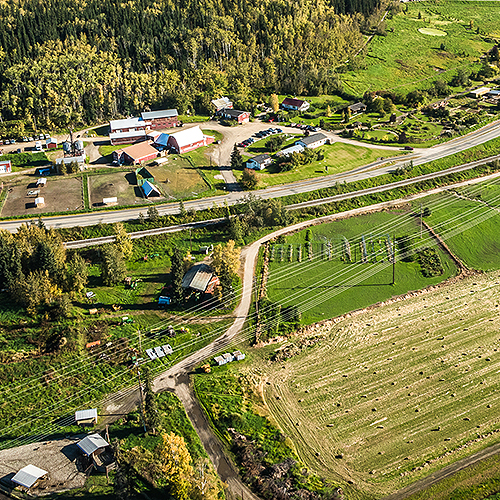Food Security & Agriculture
The challenge
Given Alaska’s extreme weather conditions, vast roadless areas, and extensive permafrost, it may not come as a surprise that the state has one of the smallest agricultural industries in the nation. Many Alaska Natives, residents of rural communities, and even urban residents depend on subsistence hunting, fishing, and gathering for food security and for their cultural connection to the land and sea. Yet, these are nowhere near enough to meet the existing demand in the food supply, some 95% of which is imported from elsewhere. Alaskans are vulnerable to disruptions in the food supply chain and interruptions due to extreme weather events. A heightened awareness of the inherent vulnerabilities in disruptions to the supply as well as rising costs, has prompted a growing interest at the local community- and individual-level, to increase efforts in developing stable local food production systems.
And the opportunities
Our ongoing research is investigating viable solutions to Alaska’s unique climate challenges, such as through the use of improved technologies in a state-of-the-art controlled environment facility, experimenting with vertical farming techniques, hydroponics, and LED lighting strategies for potential use in Alaska’s growing base of agricultural soil and land. Our unique climate enables production of crops at unique times, making it possible to produce and ship peonies at times when they are not available from farms in more temperate climates. And rapid climate change in the north includes consequences beneficial to agriculture in Alaska, including longer growing seasons and increasing potentially arable land.
Faculty doing research in this area:
Horticulture
- Meriam Karlsson
Plant pathology
- Jenifer McBeath
Agronomy
- Mingchu Zhang
New Crops
- Jenifer McBeath
- Meriam Karlsson
- Mingchu Zhang
- (Mohammed) Jakir Hasan (research faculty)
In the news
-
Alaska is leading the nation in new farm growth. Is it enough to address food security concerns?
Alaska Public Media, UAF Cooperative Extension Program’s Casey Matney and the Intertribal Agriculture Council’s Tikaan Galbreath. (October 22, 2021)



